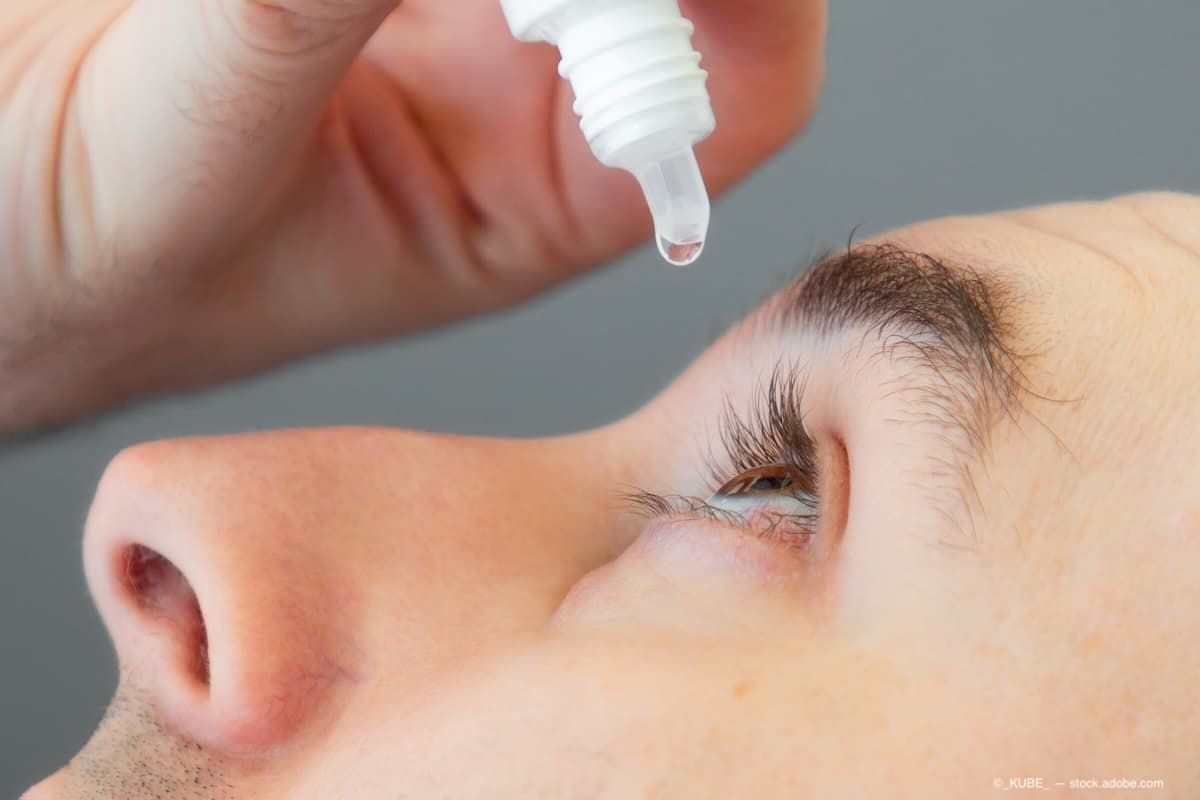News
Article
Cyclosporine ophthalmic solution 0.09% Phase 4 data indicates sustained improvement in dry eye signs, symptoms in patients switched from cyclosporine ophthalmic emulsion 0.05%
Author(s):
According to Sun Pharmaceutical Industries, the study design mirrors real-world experience with dry eye disease, including allowing use of artificial tears and measurement of CFS in all 5 corneal zones.
(Image Credit: AdobeStock/nong)

Sun Pharmaceutical Industries Limited announced Phase 4 data indicates that cyclosporine ophthalmic solution 0.09% (CEQUA; Sun Pharmaceutical) induces sustained improvement in the signs and symptoms of dry eye disease (DED).
According to the company, cyclosporine ophthalmic solution is a calcineurin inhibitor immunosuppressant indicated to increase tear production in patients with keratoconjunctivitis sicca (dry eye).
The company noted in its news release that researchers indicated that cyclosporine ophthalmic solution elicited significant improvement in corneal fluorescein staining (CFS, a test used to detect damage to the cornea) and in modified Symptom Assessment in Dry Eye (mSANDE) scores in patients with DED whose disease was uncontrolled on cyclosporine ophthalmic emulsion (Restasis; Allergan, an AbbVie company) 0.05% therapy.1
Researchers conducted a 12-week Phase 4 multicenter study during which patients were given cyclosporine ophthalmic solution twice daily and found it led to improved CFS and mSANDE scores starting at Week 4 of treatment and maintained these improvements through Week 12. Cyclosporine ophthalmic solution offers a high concentration of cyclosporine for ophthalmic use and is the first and only FDA-approved cyclosporine treatment delivered with nanomicellar NCELL technology, which helps to improve the bioavailability of cyclosporine, resulting in improved ocular tissue penetration.
Brittany Mitchell, OD, Head of Medical Affairs, Ophthalmics, at Sun Pharma, lauded the research.
"In addition to the rapid and sustained symptomatic improvement in patients with dry eye disease treated with CEQUA, this study is notable for its design, which allows for use of artificial tears, thus replicating real-world conditions as closely as possible for a controlled clinical trial," Mitchell said in the news release. "The data presented at the American Academy of Optometry meeting represent the first of a series of assessments from this trial, with results thus far consistent with the efficacy, safety, and convenient dosing of CEQUA. We look forward to sharing additional information as we continue to analyze the data from this trial."
Lead investigator Josh Johnston, OD, FAAO, of Georgia Eye Partners in Atlanta, Georgia, said researchers were encouraged to observe significant improvements in dry eye signs and symptoms as early as 4 weeks into treatment with the solution and to see even greater improvements at 8 weeks and again at 12 weeks.
“By assessing corneal fluorescein staining in all five zones of the cornea, we were able to attain a more complete characterization of corneal health than in many dry eye disease trials, which typically assess only a few corneal areas,” Johnson said in a news release.
The company noted its study enrolled adults with DED inadequately controlled (i.e., still symptomatic and/or exhibiting disease signs) on current cyclosporine ophthalmic emulsion therapy for at least 3 months, and who had a history and clinical diagnosis of DED for at least 3 months before screening/baseline. Patients received one drop of CEQUA in each eye twice daily for 12 weeks. Investigators assessed CFS and mSANDE scores at baseline and at Weeks 4, 8, and 12, and/or upon early discontinuation from the study.
Moreover, the company noted CFS was scored on a 0-4 grading scale in 0.5-point increments, with a score of 0 indicating no stain (i.e., healthy cornea) and a score of 4 reflecting a severe stain; investigators calculated a total CFS score by summing all five corneal area scores. The mSANDE questionnaire assessed frequency and severity of DED symptoms of dryness and irritation on a 0-100 scale, with 0 representing very low frequency/severity and 100 indicating very high frequency/severity.
Researchers offered results from 124 patients in the modified intent-to-treat (mITT) population. The mean age of the patients was 65.5 (11.6) years; 110 of the patients (88%) were female. The mean (SD) total CFS score was 5.7 (3.37) at baseline, and improved significantly (P < 0.0001) to 4.0 (3.12) at Week 4, 2.9 (2.54) at Week 8, and 2.7 (2.36) at Week 12. Similarly, the mean (SD) mSANDE score was 67.1 (21.05) at baseline and improved significantly (P <0.0001) to 48.4 (23.31) at Week 4, 44.2 (24.28) at Week 8, and 38.3 (25.99) at Week 12.
Researchers also indicated cyclosporine ophthalmic solution 0.09% was generally well tolerated in the study, consistent with its established safety profile, and there were no new safety signals in the trial. Overall, 58 patients (43.3%) reported at least one treatment-emergent adverse event (AE); most AEs were mild in severity (73.8%). The most common treatment-related AEs were instillation site irritation and instillation site pain; all other treatment-related AEs occurred in fewer than 2% of patients.
Johnson presented data at the American Academy of Optometry 2023 annual meeting in New Orleans, Louisiana.
References:
Johnston, J. Effect of OTX-101 0.09% on corneal staining and SANDE scores in patients with dry eye disease uncontrolled on cyclosporine ophthalmic emulsion 0.05%. Abstract presented at American Academy of Optometry 2023; October 12, 2023; New Orleans, LA.
New study focuses on scope of dry eye disease in the U.S. American Optometric Association; 2017. Available at: https://www.aoa.org/news/clinical-eye-care/new-study-dry-eye-disease. Accessed September 10, 2019
Newsletter
Don’t miss out—get Ophthalmology Times updates on the latest clinical advancements and expert interviews, straight to your inbox.




